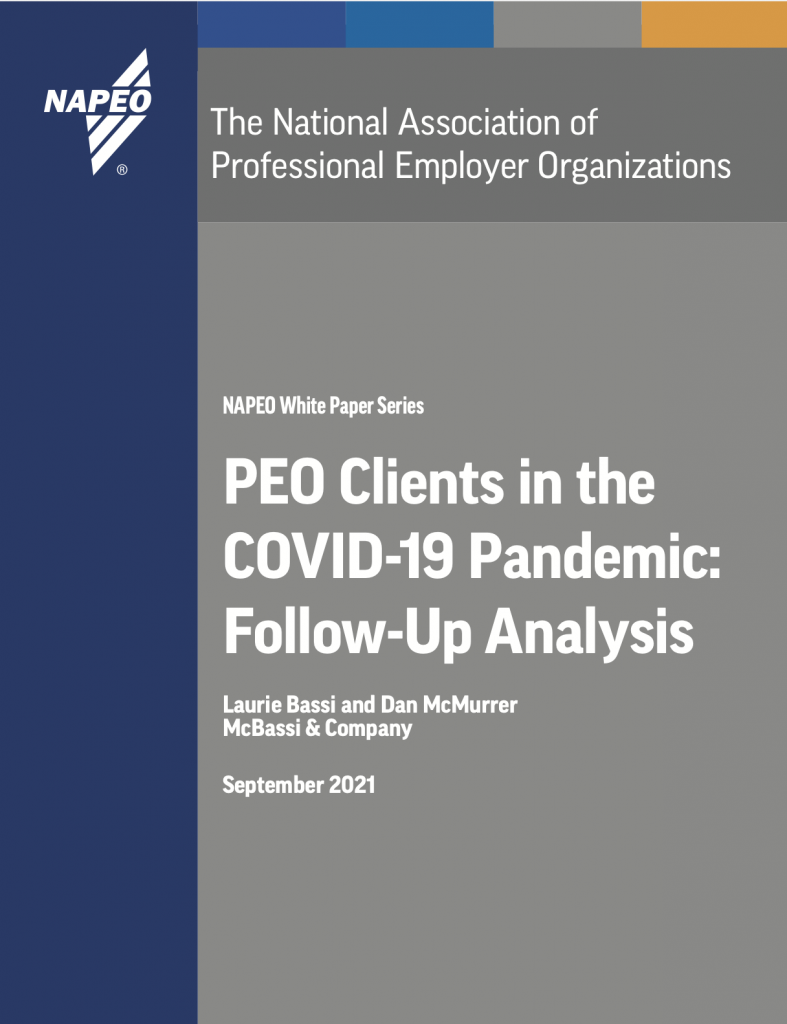
COVID-19 and the Workplace
When It’s Time To Safely Return To The Workplace, We Can Help.
Being an employer has never been more challenging than during the pandemic. Everyone is concerned with finding a workable balance between health, safety, family, and work. The CDC continues to update guidelines for COVID-19 to help protect businesses and their employees. HCC continues to support business owners, startup founders and nonprofit leaders with guidance and support for navigating the legal and practical realities of operating organizations in today’s “return to the workplace” environment.
What considerations should employers keep in mind when thinking about requiring employees to be vaccinated before returning to the workplace?
What Are The CDC Guidelines For Workplaces Regarding COVID-19?
COVID-19 is here to stay and so are the employer-related issues surrounding the virus. Although the pandemic seems to be more controlled thanks to vaccines, the coronavirus that causes COVID-19 is still circulating. With the threat of another wave of infections in the fall and the specter of vaccine boosters in the future, you need to ensure you’re doing everything you can to avoid disruptions to your business operations while keeping your employees safe. You can help keep your workplace safe by implementing the latest CDC guidelines for COVID-19.
While CDC Covid guidelines are a good place to start, employers must also comply with a variety of state and federal employment laws. These employer regulations affect how your company responds to COVID-19. Workplace guidelines from OSHA, the EEOC, and the FLSA will impact how your business responds to COVID-19 in the coming years.
Like most government regulations, actionable COVID-19 guidelines can be difficult to decipher. We put together a breakdown of the CDC’s latest recommendations and some of the laws that impact employers’ COVID-19 response.
How Employers Can Prevent COVID-19 in the Workplace
The first step in the CDC guidelines to keeping your employees safe from COVID-19 is a comprehensive hazard assessment. Identify situations in which employees may be exposed to COVID-19. Obvious situations would include your employees’ interactions with the public. Other situations include areas where social distancing is not possible, such as meeting rooms.
Once the hazard assessment is complete, identify strategies to reduce the risk of exposure. If you’re like many businesses, you’ve probably already installed barriers and implemented social distancing rules. But now that government restrictions are lifting, it’s time to revisit your hazard assessment and look for additional areas of improvement. Improving ventilation in your building, whether by opening windows or increasing the airflow in your HVAC system, can offer protection at a time when mask mandates are decreasing.
A COVID-19 outbreak at your company can still jeopardize your business and your employees’ health, especially since many of your employees are probably returning to pre-pandemic activities. Consider continuing or implementing health checks for everyone entering the building. Also, if you’ve implemented work-at-home policies or staggered shifts, use caution and return to pre-pandemic work practices slowly.
Employers Must Conform to ADA When Following CDC Guidelines
The U.S. Equal Employment Opportunity Commission (EEOC) set forth guidelines to help employers navigate CDC guidelines without breaking laws that protect their employees’ medical information.
For example, if you do implement health screenings, limit your list of symptoms to those found on the CDC’s website. You also may not ask for medical information about the employee’s family. Instead, ask if the person has had contact with anyone exhibiting symptoms or has tested positive for COVID-19. The EEOC also clarified employers may administer COVID-19 tests. However, employers must use tests recommended by the FDA for accuracy. Like all other medical information, the results of the screening and the tests must remain confidential.
If any of your employees exhibit symptoms of COVID-19 at work, you do have the right to require them to leave. And if employees call in sick, you can ask them if they have symptoms of COVID-19. But you can’t ask them about symptoms or illnesses unrelated to COVID-19.
Finally, some employees may request telework as a reasonable accommodation due to COVID-19 risks. Employees who may qualify would include older employees, employees with compromising health conditions, or employees with a preexisting mental illness.
There are many reasons an employee may not be vaccinated. Consider options for creating a safer workplace for all of your employees.
Covid-19 May Be An OSHA-Recordable Illness
Despite your best efforts, some of your employees may still become sick with COVID-19. Your recordkeeping obligations under OSHA guidelines depend, in part, on whether your business is in the health-care sector.
Most health-care employers must report all instances of COVID-19 in their workforce, whether or not the infection is work-related. Employers not belonging to the health-care industry must only record COVID-19 illnesses that meet certain requirements. One requirement is that the infection is work-related.
In addition to recordkeeping, other long-standing OSHA guidelines affect how employers must handle COVID-19. Under the General Duty Clause, employees are entitled to a workplace “free from recognized hazards that are causing or are likely to cause death or serious physical harm.” According to OSHA COVID-19 guidelines, the General Duty Clause may require employers to provide PPE to protect workers.
Employers questioning how and if adverse reactions from vaccines should be recorded on their OSHA 300 Logs received some clarification on June 18th. Moving forward, employers do not need to record adverse reactions to the vaccines, even if the employer requires or actively encourages vaccination.
How Employers Should Handle COVID-19 Infections
Obviously, you don’t want employees at work if they are sick with COVID-19. But how has your HR team handled sick days in the past? If you’ve inadvertently created a culture in which staying home sick is frowned upon, hopefully you’ve corrected course during the pandemic.
Implement policies to avoid inadvertently punishing employees who miss work for illness. Create systems in which team members help complete a sick employee’s tasks. Consider implementing a program for sick pay. As the pandemic demonstrated, a widespread illness outbreak can be costlier than benefits that help employees stay home and get care when they are sick.
CDC guidelines for COVID-19 suggest that employers do not require a doctor’s note or COVID testing. Medical facilities are busier than usual and employees may have trouble getting an appointment. Instead consider a COVID-19 health screening form that helps employees determine if their symptoms warrant missing work.
Are there other options an employer can offer those employees who are not eager to return to the workplace?
Other Employment Law Changes Due to COVID-19
If your company has terminated employees during the pandemic, the American Rescue Plan Act of 2021 may change the way you handle their COBRA benefits. Under the law, employees may be eligible for a subsidy that covers COBRA premiums. If any of your employees qualify for the subsidy, your company is required to provide COBRA benefits and recover the costs through Medicare tax credits.
The Fair Labor Standards Act, or FLSA, may also affect how your business handles COVID-19. For example, if your company is still requiring some employees to work from home, workers who are unable to do so may qualify for unemployment benefits. Additionally, if you’re requiring employees to get tested before they can return to work, you may need to compensate them for their time. And while the Families First Coronavirus Response Act expired in 2020, employers who continue to provide paid sick leave for COVID-19 may be eligible for tax credits.
HR Experts Can Help You Create COVID Response Plan
Even if the worst effects of the pandemic are behind us, employers must plan to contend with COVID-19 for years to come. Infection surges threaten not only your employees’ health, but also your company’s productivity in a time of economic uncertainty. Evolving COVID-19 guidelines, laws, and regulations add to the ever-growing specter of citations and fines surrounding other complicated noncompliance issues.
COVID-19 increases your risks as an employer. You’re more vulnerable to production issues, noncompliance issues, and employee lawsuits. A team of HR advisors can expertly guide you in your COVID-19 response as the pandemic evolves. In the month and years to come, HR experts can help you adhere to CDC COVID-19 workplace guidelines without violating employment laws.
Let HCC help you protect your organization against the pitfalls of COVID-19 with return to work policies and workplace guidelines that are right for your business.
BONUS WHITE PAPER: PEO Clients in the COVID-19 Pandemic: Follow-Up Analysis

A recent white paper published by the National Association of Professional Employer Organizations (NAPEO) offered significant advantages for organizations that partnered with PEOs during this evolving COVID pandemic. “PEO Clients in the COVID-19 Pandemic: Follow-Up Analysis” by Laurie Bassi and Dan McMurrer of McBassi & Company reviews the new set of challenges that all businesses have confronted over the last year and a half.
This white paper explores the effect that PEOs have had on business outcomes for their clients over the course of the pandemic to date. In particular, this paper explores how PEO clients have fared from early 2020 through July 2021 across a range of different measures in business operations, changes in employment, and success in accessing support programs. Overall, the study found that, as of July 2021, PEO clients are doing better in each of the three categories. As a result, PEO clients are also in a stronger position for future long-term success than other comparable small businesses.
Download the white paper here, and let us know how we can partner as your PEO to help you simplify being an employer.


